In my post about last week’s 2JZ swapped M5 many questioned why you would go through the expense and difficulty of swapping in the Toyota unit, or at least that it was downright sacrilegious to do so. Perhaps I have a looser sense of how to do things the proper way, but I certainly can recognize that the 2JZ unit is capable of higher levels of power than the original S62 V8 was for less money, and that at least makes some sense to me even if I wouldn’t do it. When I first came across today’s E34 M5, I was initially struck with awe, but as I’ve sat wondering what to write up about this car, that awe has slowly turned to a bit more confusion. The reason why is fairly straightforward – some enterprising individual has taken a quite nice Euro-market E34 M5 (great start) and swapped in the equally great S70B56 V12 from a 850CSi along with a 6 speed manual transmission. Take a look for yourself at this monster:
Year: 1993
Model: M5
Engine: 5.6 liter V12
Transmission: 5-speed manual
Mileage: 76,000 mi
Price: $20,000
CLICK FOR DETAILS: 1993 BMW M5 S70 swap on Willz.Ca
Model: 1993 European M5 chassis
Chassis: WBSHC91090GD63011
Build Date: June 1992
Mileage: 76,000 miles
Colour: Black
Motor: 5.6L 850 CSi engine (S70B56) conversion
Interior: black leather mechanical sports seats, leather stitched center console and door skins
Transmission: new 6 speed manual
Traction Control:
Brakes Front: 2-piece, 355 (14″) rotors UUC 4 piston aluminum calipers
Brakes Rear: vented 328mm (12.9″) rotors
Wheels: 17 x 8 forged system II
Tires: 235-45 and 275-40 Dunlop Sport 5000
Features: front strut bar, HR springs, uprated sway bars, UUC short shifter, Eisenman stainless exhaust, in dash CD
Options: single air bag, ABS, rear deck wing, rear window shades, E code headlights, clear blinkers, Motorsport door handles
Comments: Hand built custom driveline by Brett Anderson from Koala Motorsport, Cleveland OH. Sold and registered as 1993. Self-leveling not removed – still functional. New EDC shocks all ’round. Quaife LSD.
As I said, initially I thought “Holy beep that is awesome!”; seeing that monster V12 in a real M car is sort of like 1995 got all sorts of better. But then I sat on it and thought about it some more, and came away confused. The S38 is a pretty strong motor and this car didn’t have many miles when it was yanked from what I can tell, so there’s that question. Then, the replacement motor is that awesome 5.6 V12. Well, at least it was awesome in 1995, but my main question comes from the result. That V12 is effectively two inline 6s, meaning you have double of nearly everything in the engine bay. On a 20 year old car, that’s not always a good thing – especially those early computers, which seem to have hiccups.
Then there is the second main question when you look at the performance. Sure, the S70 has a healthy bump of torque over the S38, but only 70 horsepower more than even the lowly 3.5 – bump up to the optional 3.8, and those numbers are closer. Then there’s the question of availability; it’s not like the S70 is a cheap motor to come by, so this was intentionally done at great expense. Further, unlike the all-aluminum M73, the M70-based S70 has a big old iron block, so you’re throwing off the balance some. While I have no doubt this car is a blast to drive and looks fantastic, I am left scratching my head a bit. Still, like the Supra-powered E39, I’m happy that someone went through the effort and created what would have been the ultimate handbuilt M-car. And it can all be yours for less than the price of most E39 Ms…
-Carter
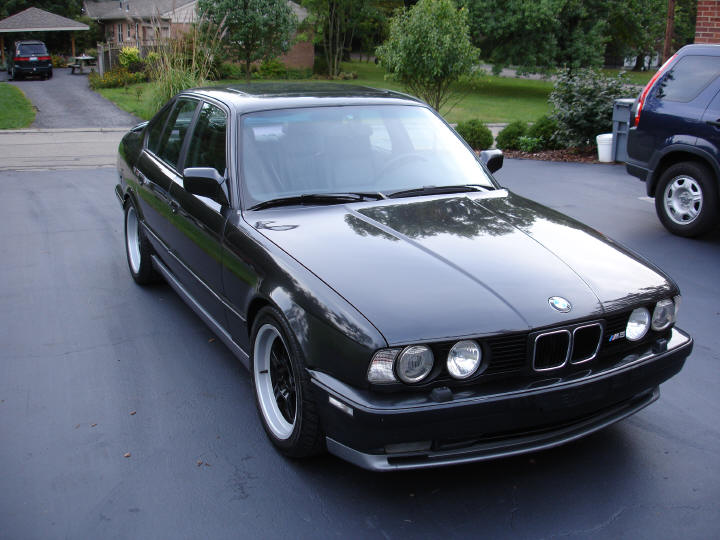
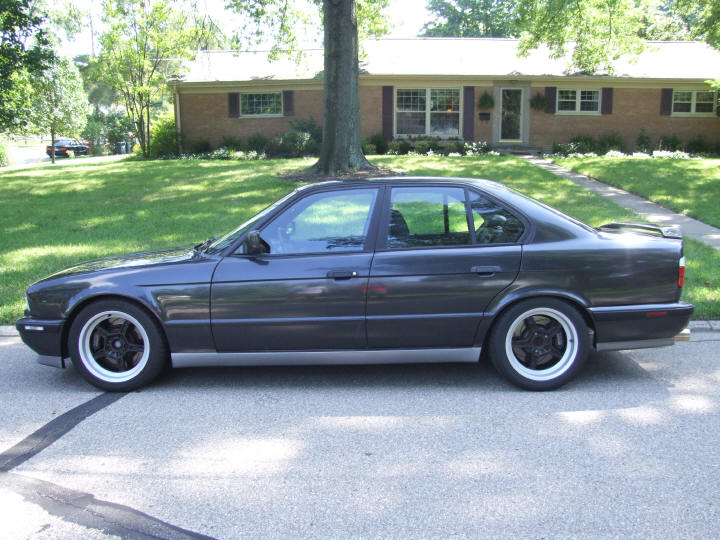
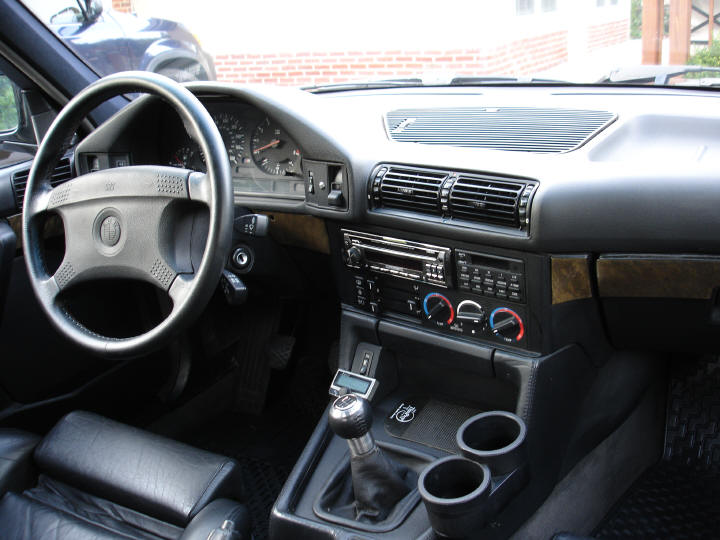
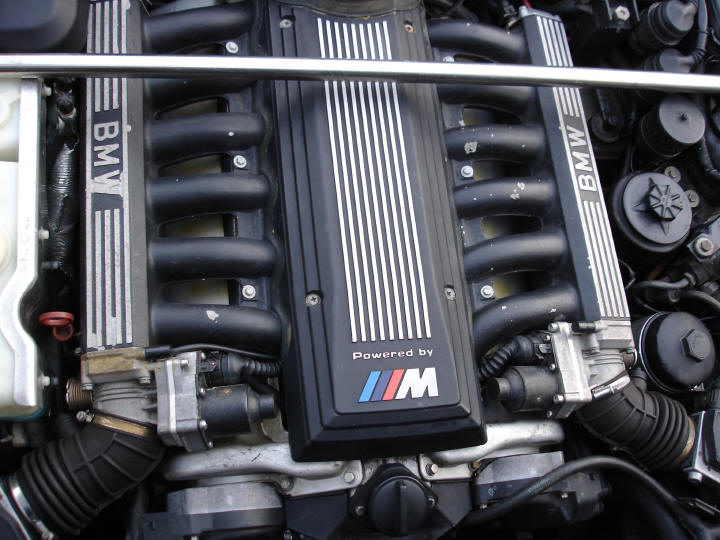

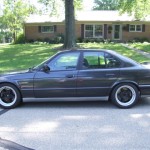

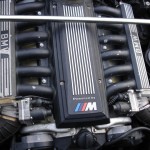

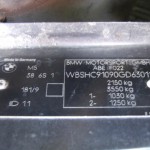
Peak “horsepower” is not the only metric of performance in a street car, power range is what dominates in actual driving and the S70 is stump pulling freight train from the “good’ol days.” I agree that altering a true euro market E34 M5 by stuffing a Iron V12 in and possibly destroying the balance is questionable, but I cant argue with the formula E34+V12+manual=I like it.
what a serious motor. love it
Good idea, but it’s all about the character of the car you end up with. Reving and shifting the S38 is a joy. I can’t help but think you lose that by going to the V12, and you end up with a ultra fast, ultra smooth cruiser that feels like you are always short shifting it.
UrSDriver, as a fan of the Ur-Ss I’m sure you’d appreciate how a turbocharged version – which was available via Alpina or Dinan – could be a solution to the “lack” of twist on the S38 compared to the V12. I’d agree that in normal driving the S70 would trump a S38 in range of power, but the complexity and expense leave me wondering why it was undertaken – just because? Don’t get me wrong – I love that it was done – but with both turbocharged inline-6 and supercharged all-aluminum V8 options available – each putting out the same if not more torque, one wonders a bit at the motor-vation behind this one….
Alpina B10 BiTurbo is my dream BMW! Of course I agree. The appeal a V12 is not practicality or simplicity but it’s completely justified to me, they just have no equal in the left lane.
Iron block ? Are you on drugs ? With 410 lb ft of torque the S70 was BMWs highest torque output engine until recently and also one of the lightest all alloy v12s. Top that off with the lowest production numbers of any engine made by BMW…..I think that car is very lucky.
Sorry Simon, I think you’re wrong. The M73 switched to the aluminum alloy block, but the M70 and S70 were iron block; they were derived from the inline-6 motors originally.
“Compared with its M70 predecessor, the M73 uses an aluminum engine block and cylinder heads.[1] While most other engines in the BMW range had switched to DOHC and 4 valves per cylinder, the M73 used SOHC and 2 valves per cylinder.[2]”
Ouch my fragile ego. Iron block is an asset, early BMW alloy blocks had some sporadic issues with Nikasil cylinder liners as I recall.
Actually as I rebuilt my S70 that sits in my CSi I think you may be mistaken. The M70 and S70 are aluminium. The v8 M60 had some problems with liners due to Europe removing sulphur from fuel, the later v8 M62 addressed that problem.
https://www.google.co.uk/search?q=m70+engine+block&client=safari&hl=en-gb&source=lnms&tbm=isch&sa=X&ei=WSyBUoqjHpSihger3YCICw&ved=0CAkQ_AUoAA&biw=1024&bih=672#facrc=_&imgrc=DqzYqlDvyc5OJM%3A%3BOgtRE0MmstKb7M%3Bhttp%253A%252F%252Fbmwe32.masscom.net%252Fsean750%252FengineRebuildM70%252FMotorbovencartervoor.jpg%3Bhttp%253A%252F%252Fbmwe32.masscom.net%252Fsean750%252FengineRebuildM70%252FM70rebuild_6.htm%3B640%3B480
Funny looking iron 🙂
Here you go . The lightweight aluminum crankcase is manufactured hypereutectically. That is to say, special measures are employed during the formation, casting and cooling which promote torsional resistance and dimensional stability. The crankcase is symmetrical and can be machined to accept the starter motor on either side to accommodate market demands of left- or right-hand drive.
The cylinder banks are arranged in a 60°V configuration with a constant cylinder center-to-center distance of 91 mm. Cooling is achieved with horizontal coolant flow. The cast iron main bearing caps, which are heat treated, are fastened to the crankcase with four bolts (arrows). Two are attached parallel to the vertical axis and two parallel to the cylinder axis. This patented configuration promotes bottom end stability and strength.
During crankcase formation, a concentration of silicon crystals is maintained in the cylinder bore areas. Special cylinder wall treatment and honing produces a wear resistant silicon surface that, in combination with metal-coated pistons, provides minimal wear and long life.
The drop forged steel crankshaft has excellent torsion resistant qualities and is supported in seven main bearings. Connecting rod journals are spaced 1200 apart with two counterweights per journal. The axial thrust bearing is now located at the No. 7 bearing position for improved vibration damping. Similar to the M21 design, all bearing shells are triple layered.
The main bearing shells conform to the triple classification.
The connecting rods are made of drop forged steel and are similar to the M20 type. The center to center distance is 135mm, however, unlike the M20, the big end is machined asymmetrically. The special machining allows two rods to run on one journal, thus there is an “installed direction” requirement. The connecting rod bearing shells conform to the double classification. Vibration is held to a minimum with short 60° ignition intervals and the use of low mass, light alloy pistons. The pistons have a 0.1mm ferrous coating which provides a highly compatible operating surface for use in aluminum/silicon cylinders. The combustion chamber bowl is located eccentrically to concentrate the air/fuel charge central to the spark plug. Correct wrist pin off-set is maintained with the use of
different pistons for each cylinder bank. The top and intermediate rings are compression rings having plain and tapered faces respectively. The oil control ring has a rubber-lined spring with a bevelled face for good oil control.
Cylinder heads are manufactured of die cast aluminum and
are identical for both banks. Cylinder head gaskets in various thicknesses are available so that combustion chamber volume uniformity can be maintained. The intake and exhaust valves are arranged in a 14° V-configuration and operated by overhead camshafts which are supported in seven bearing journals each. Camshaft lubrication is pressure fed at the journals and with overhead oil pipes providing spray oil to the camshaft lobe/rocker contact area. This valve arrangement in conjunction with the piston bowl forms a compact combustion chamber with excellent cylinder filling and evacuating characteristics. Low valve mass and dual valve springs insure reliable opening and closing between the short ignition periods. Due to the offset of the cylinder heads, the camshafts are of unequal length. The longer shaft is used in the left cylinder head.
Well, as I don’t own one it’s pretty hard for me to argue. Thanks for the update, Simon!
You’re welcome. All 3 are essential the same engine…the heads on the m73 are different and it has a much more sophisticated management system.
The McLaren S70/2 is a completely different engine.